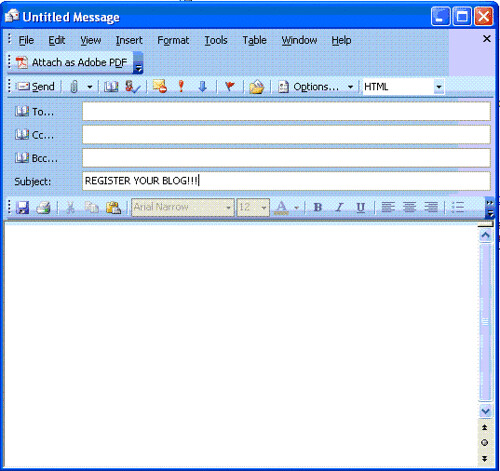5 Stages of Moderation
This past week in the open Facilitating Online 2010 (FO2010) course our topic was
What is Online Facilitation. One of the readings that really stood out for me this week was Gilly Salmon's
5 stages of moderation model. Gilly used a variety of ways to convey the role of facilitator and how it changes at the various stages that participants go through when learning on-line. Her use of a variety of visuals really helped to bring home her message. I plan to go back to this article again when I start facilitating a new group. I definitely recommend reading the article if you are planning to facilitate online.
Nancy White's Elluminate Session
Another standout from this week was the
Elluminate session with
Nancy White. I was not able to attend the session live, but really enjoyed the recording. One problem was that I kept wishing I could chime into the discussion! I have attended one of Nancy's sessions before and she does a wonderful job. Here are my notes from the session:
Volunteer Facilitators
Our volunteer facilitators,
Carole and
Sharon did a wonderful job. They started off by describing their prep for the session (they Skyped prior to discuss how they wished to do things, they entered the room early, they liaised with Nancy to see how she wanted the session to look), and they introduced themselves and Nancy. As the session progressed they did a good job of ensuring that those that wanted to speak got their opportunity, they welcomed latecomers, and they made sure that the session kept to the prearranged time (often a difficult thing to do!)
Diving In
Nancy started off by getting people to use the whiteboard to write down what they were most interested in learning in the session. Before doing this she polled the room to see who knew how to use the whiteboard and who didn't. There were a number who did not know how to use it, but instead of Nancy explaining how, she asked one of the group who said they did know how to explain to the group. She did this again later with regards to adding a new page to the whiteboard. I though this was a good way to do things--it allows the group members to share their knowledge. Spreading facilitation about the group!
Once everyone had written on the whiteboard she showed them how to move items around on the whiteboard to clarify things. One strategy is to allow different participants the opportunity to sort items on the whiteboard. She mentioned that sorting is an important facilitation tool. The use of colours and boxes (around similar ideas) can help too. She asked them to think about how the space feels for participants--was it chaotic, how did it feel if someone wrote in your text box or over your text? Then as an experiment she made everyone facilitators/moderators. From the feedback many people found this a great experience. Elluminate does look a little different when you have moderator privileges and of course you have control over many more things.
On the Importance of a Wingman
Nancy mentioned, and that has become clearer to me as I've attended more of the FO2010 sessions, that it can be crazy to try and facilitate a group by yourself (unless it is a group that has met many times and where many people in the group are de facto facilitators), you really need a wingman (wingperson?) The co-facilitator or helper is in a good position to see where there might be problems and step in to help them.
Chaos and Contraints
One of the themes that Nancy touched on was the tension between chaos and constraint. She had everyone draw on the whiteboard at the same time and for some it felt very chaotic, for some it was frustrating because their space was being invaded. She then set up constraints by way of putting a grid on the whiteboard and asking everyone to pick a square and draw inside the square. This was more organized, however for some participants this might feel too controlled. Part of the challenge of facilitating is striking the right balance between creative chaos and constraint. Context plays a big part in helping you to decide on this balance. A group that has met many times might be better able to handle the more chaotic approach, while with a one time meeting of a large group you may need to err more on the side of constraint.
Providing Summaries
When someone arrived late to the session Nancy welcomed them and asked someone to give a good 4 sentence summary of where the session was at. It was a good way to get the new person up to speed and a way for the group as a whole to think about what had been experienced so far. She also mentioned that recapping is an art and that if we wanted to see an example of an amazing recapper, to check out
Jerry Michalski who hosts a YiTan call, which lasts approx 35min which he then recaps at the end. Nancy said that she tries not to do too much synthesizing for the group. The group then discussed the benefits of summarizing and one of the key things that came out of that discussion for me was that the summary should be brief and about the content, and we should not do the 'meaning making' for the participants. Also, when we give over to a participant the responsibility of summarizing it shows the other participants the importance of summarizing. This brought up the interesting question of 'What layers are we facilitating?' At the end of the session Nancy went back to the whiteboards and summarized the discussions the group had had and in particular she went back to an earlier screen where participants had written down what they were most interested in discussing and she asked them to put an x or a check next to each one to indicate whether they felt those items were discussed. This was a good way to review the objectives of the session.
Communities, Networks and Loose Connections
Another topic that came up was the distinction between Communities and Networks. Nancy talked about the fact that communities are bounded groups where we give up part of our 'me' identity to take on a 'we' identity. Communities often have a shared purpose or goal. Networks on the other hand have fuzzier boundaries or intersecting boundaries.

If you are facilitating a community you are going to have to do it differently than when you are facilitating a network. In networks there is often lots of choice and more diversity than in a community. In a network if there is a road bump or a problem you can avoid it or go around it. Communities don't scale--they can become too big to be effective. A problem of too much or too little control can kill a community. Communities, however, can be great at getting things accomplished. Nancy used the imagery of facilitation as network weaving. The area in between networks and communities are where you have looser connections. But these looser connections are often where interesting things occur. I wonder if this is the same as the idea of the strength of weak ties as per
Mark Granovetter?
A Question
One thing I wondered about the Elluminate session was that some people had (profile) after their names and if you hovered your mouse over them a little box came up with their photo and bit of information about them. I thought this was a really neat tool--the rest of the people in the group become more real when you have a better sense of who they are. For example, I'm terrible with names, but if there is a photo of the person I am better able to remember who they are and to connect with them.
The Wrap Up
It was a good week. I'm learning a lot and connecting with more people in the FO2010 class. I look forward to what we'll learn this coming week. If you have any thoughts on what I've written I'd love to hear from you! As always, thanks for reading what I write.









